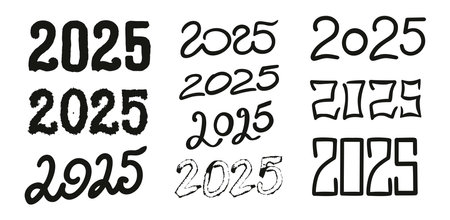Introduction: Contextualising Chakras in the Western Imagination
The concept of chakras, while rooted in ancient Indian spiritual traditions, has undergone a fascinating journey of reinterpretation and assimilation within Western spiritual thought, particularly in Britain. The first notable encounters with chakra concepts date back to the late 19th and early 20th centuries, a period marked by increased cross-cultural exchanges due to colonial expansion and scholarly interest in Eastern philosophies. British intellectuals, theosophists, and early spiritual seekers encountered references to chakras primarily through translated Hindu and Buddhist texts as well as through direct interactions with Indian yogis and mystics. These initial sources often presented chakras through a blend of academic interpretation and esoteric fascination, shaping how the concept was perceived by Western audiences. Within the British context, chakras were often framed as exotic symbols of mystical knowledge and inner transformation, appealing both to the rational curiosity of scholars and the experiential aspirations of spiritual practitioners. As such, the introduction of chakra ideas into Britain was not merely an act of cultural borrowing; it was also a process of adaptation that reflected contemporary interests in psychology, health, and alternative spirituality. This historical moment set the stage for the subsequent evolution of chakra concepts within broader Western spiritual traditions.
2. Early Encounters: Chakra Ideas in Orientalist Scholarship
The nineteenth century marked a pivotal era for the transmission of Indian philosophical concepts into the British intellectual milieu. As the British Empire expanded its reach across the Indian subcontinent, a wave of Orientalist scholarship emerged, aiming to catalogue, translate, and interpret the vast array of South Asian religious and spiritual traditions. In this context, the concept of chakras—a system deeply embedded within Indian yogic and tantric frameworks—was introduced to Western audiences through a distinctly colonial lens.
British Orientalists such as Sir John Woodroffe (also known by his pen name Arthur Avalon) and other colonial scholars played an instrumental role in shaping early Western understandings of the chakra system. Their translations and commentaries often reflected prevailing Victorian attitudes: a mixture of fascination, exoticism, and attempts at rationalisation. These interpretations were not always faithful to the original Sanskrit sources; rather, they frequently filtered Indian metaphysical ideas through Western categories such as “energy centres” or “psychic anatomy”, which resonated with contemporary scientific and medical discourse.
The adaptation process can be systematically analysed as follows:
| Aspect | Indian Tradition | Orientalist Interpretation |
|---|---|---|
| Source Texts | Sanskrit Tantras, Upanishads | English Translations & Commentaries |
| Philosophical Context | Embedded in Yoga and Tantra cosmology | Reframed as esoteric or mystical physiology |
| Purpose | Spiritual liberation (moksha), energy cultivation | Mental health, personal development, self-improvement |
| Cultural Framing | Sacred, ritualistic practice | Pseudoscientific, comparative religion studies |
This process of reinterpretation was not merely academic. It reflected broader patterns of cultural negotiation between Britain and India during the colonial period. The translation of chakras into terms familiar to British readers—often using analogies drawn from anatomy or electrical science—made these concepts more accessible but also subtly altered their original significance. As a result, early Western encounters with chakra philosophy laid the groundwork for further adaptation in subsequent spiritual movements throughout Europe and Britain.

3. Chakras and Esoteric Traditions: Theosophy and Occult Revival
During the late Victorian and Edwardian eras, Britain experienced a profound revival of interest in esotericism, mysticism, and alternative spiritualities. This period, marked by rapid industrialisation and shifting religious sensibilities, saw the emergence of groups such as the Theosophical Society, the Hermetic Order of the Golden Dawn, and various occult circles that sought to reinterpret Eastern philosophies for a Western audience.
Theosophy: Bridging East and West
The Theosophical Society, founded in 1875 by Helena Petrovna Blavatsky and others, played a pivotal role in introducing chakra concepts to Britain. Theosophists were deeply invested in syncretising Hindu and Buddhist spiritual ideas with Western esoteric traditions. Influential figures like Charles Leadbeater and Annie Besant translated Indian chakra systems into English texts, describing chakras as subtle energy centres with both physiological and psychic significance. They presented these ideas through a distinctly British lens—emphasising self-improvement, moral progress, and scientific rationalism in alignment with the intellectual climate of the era.
Occult Societies and Chakra Adaptation
Parallel to Theosophy, other British esoteric groups—such as the Golden Dawn—incorporated chakra symbolism into their ritual practices and teachings. These societies often blended Indian concepts with Western frameworks like Kabbalah or Hermeticism. Chakras were reimagined as part of a universal system of mystical ascent and personal transformation. Manuals published in Britain during this period frequently referenced chakras alongside traditional Western symbols, further integrating them into local occult discourse.
Cultural Translation and Local Contexts
The adaptation of chakras within these movements was not a mere transplantation but involved significant reinterpretation to suit British cultural expectations. Victorian values such as respectability, orderliness, and empirical enquiry influenced how chakras were discussed—often downplaying overtly tantric or sensual aspects in favour of spiritual discipline and moral virtue. This selective adoption allowed chakra teachings to resonate with contemporary audiences while maintaining an aura of exoticism.
In summary, the late nineteenth and early twentieth centuries saw chakras become an integral part of British esoteric spirituality. Through organisations like the Theosophical Society and various occult orders, chakra concepts were reframed to fit Western metaphysical paradigms—reflecting both fascination with Eastern wisdom and the distinctive priorities of British society at the time.
4. Modern Adaptations: From Yoga to New Age Practices
The integration of chakra concepts into modern British spiritual practices reflects a dynamic process of adaptation and reinterpretation that began in earnest during the mid-twentieth century. The journey from esoteric Eastern philosophy to mainstream British culture is marked by a series of transformative steps, each shaped by prevailing social, cultural, and philosophical trends.
Chakras Entering British Yoga Culture
The initial introduction of chakras into Britain can be traced to the post-war period when yoga became increasingly popular as both a physical exercise and a spiritual discipline. Pioneers such as B.K.S. Iyengar and Swami Sivananda influenced early British yoga communities, but it was through the 1960s and 1970s countercultural movement that chakras were more widely integrated. British yoga instructors began to present chakra theory not merely as an exotic curiosity but as a structured system for personal development, aligning with local values of self-improvement and holistic wellbeing.
Holistic Health and the Expansion of Chakra Theory
By the late twentieth century, the concept of chakras had expanded beyond yoga classes and entered the domain of holistic health. British practitioners adopted chakra balancing techniques within therapies such as Reiki, aromatherapy, reflexology, and crystal healing. These practices often reinterpreted traditional chakra meanings to fit Western wellness paradigms, focusing on stress reduction, emotional health, and energetic balance.
| Practice | Chakra Adaptation | Key Features in UK Context |
|---|---|---|
| Yoga | Chakra meditation and asana sequencing around energy centres | Integration into group classes; focus on mind-body connection |
| Holistic Therapy | Energy healing modalities referencing chakra alignment | Treatments offered in spas and wellness clinics; emphasis on relaxation and harmony |
| New Age Spirituality | Personalised interpretations of chakras for self-exploration | Workshops, books, and online content tailored to British audiences |
The New Age Movement’s Influence on Chakra Perception
The rise of the New Age movement in Britain during the late twentieth century brought further innovation. Authors such as Caroline Myss and Anodea Judith popularised chakra psychology through books readily available in high street shops. In this context, chakras became symbols of individual empowerment rather than strictly spiritual milestones, reflecting broader shifts towards personal meaning-making and eclectic spirituality within British society.
Cultural Translation: From Esoteric to Everyday Language
Modern British adaptations have often translated complex Sanskrit terminology into accessible English metaphors—such as ‘root’ or ‘heart’ chakra—making these concepts relatable to people with little or no background in Indian philosophy. This process is exemplified by the way chakras are referenced in everyday discussions about mental health, resilience, or work-life balance across Britain today.
Conclusion: Chakras as Living Concepts in Contemporary Britain
The historical evolution of chakra ideas within Western spiritual traditions illustrates not only cultural borrowing but also creative reinvention. In modern Britain, chakras continue to evolve—bridging ancient wisdom with contemporary needs for wellbeing and self-understanding.
5. Contemporary Perspectives: Popularity, Critique, and Cultural Appropriation
Mainstream Popularity of Chakras in Britain
In recent decades, the concept of chakras has gained considerable popularity across British society, extending far beyond esoteric circles into mainstream wellness culture. Yoga studios, holistic therapists, and even corporate wellbeing programmes frequently reference chakras as part of a broader movement towards mindfulness and personal development. Retailers sell chakra-themed products, from crystals to scented candles, reflecting a widespread commercialisation. This mainstream acceptance is often accompanied by an eclectic blend of Eastern philosophies and Western self-help ideals, making chakras accessible yet sometimes detached from their original context.
Critical Perspectives and Academic Scrutiny
Despite—or perhaps because of—their popularity, chakra concepts have also attracted critical attention within the UK. Some academics and sceptics question the scientific validity of chakras, arguing that their physiological claims lack empirical support. Others raise concerns about superficial understandings or misinterpretations propagated through social media and commercial enterprises. This critique extends into popular culture, where commentators often challenge the commodification of spiritual practices, urging for greater discernment and depth in engagement with such traditions.
Cultural Appropriation and Authenticity Debates
A particularly prominent discussion within contemporary British discourse revolves around cultural appropriation. Critics argue that the widespread adoption—and adaptation—of chakra concepts by individuals with little connection to their South Asian origins risks diluting the tradition’s meaning and perpetuating cultural insensitivity. Debates on authenticity focus on whether Western interpretations respect the philosophical depth and historical roots of chakra systems. Many British practitioners respond by seeking education from authentic sources or collaborating with teachers from relevant cultural backgrounds, demonstrating an evolving awareness of these complex issues.
Ongoing Negotiation in British Spirituality
The integration of chakra concepts into British spiritual traditions remains a dynamic process marked by negotiation between appreciation, critique, and calls for cultural responsibility. As chakras continue to influence wellness trends and spiritual exploration across Britain, questions concerning legitimacy, respect for origin cultures, and meaningful practice remain at the forefront of public dialogue.
6. Conclusion: Enduring Legacy and Future Trajectories
The continued presence of chakra concepts within British spiritual life speaks to their remarkable adaptability and enduring appeal. Over the decades, these ideas have transcended their South Asian origins, merging with local beliefs and practices to create a distinctly British interpretation of energy and wellbeing. The resonance of chakras in settings ranging from yoga studios in London to holistic retreats in the Lake District illustrates their integration into everyday cultural consciousness.
Looking forward, it is likely that chakra traditions will remain a dynamic element within the British spiritual landscape. As new generations seek meaning in an increasingly secular society, the language of energy centres offers an accessible framework for personal growth, emotional healing, and community connection. Advances in science and psychology may further influence how chakras are understood—potentially fostering dialogue between spiritual traditions and emerging fields such as mindfulness-based therapy or integrative health.
Moreover, the ongoing emphasis on inclusivity and diversity in British culture could encourage even richer cross-pollination between chakra philosophies and other spiritual or therapeutic modalities. Whether through creative reinterpretations by local practitioners or academic research into historical exchanges, the future trajectory of chakras in Britain promises both continuity and innovation. Ultimately, the legacy of chakra concepts lies not only in their past evolution but also in their capacity to adapt to new contexts, reflecting—and shaping—the ever-evolving spiritual fabric of British society.


